Welcome to Portugal
December, 2016

Once again as I arrive in Europe, I’m overwhelmed with the long rich awareness of history and the rich culture. This is the first time I’ve visited Portugal. Susan and I are traveling with our friends and regular travel companions, Bill and Linn, from Georgia. This Viking River Cruise will also take us into Spain by bus, in addition to cruising the beautiful Douro River Valley in Portugal, the source of the grapes used for Port wine and other less famous Portuguese wines.
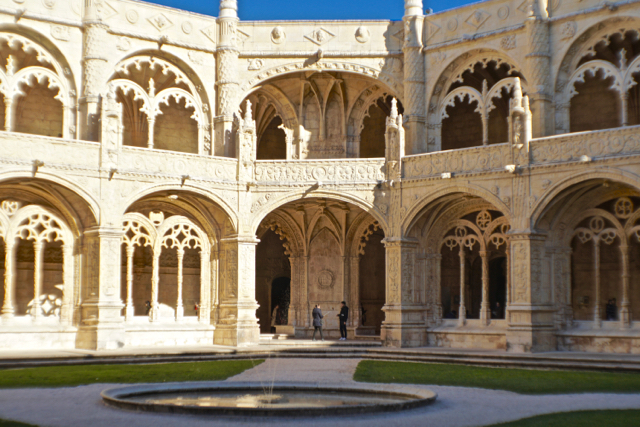
in which Portugal joined the European Union
On the first day’s city tour of Lisbon, I was reminded of historical events that I had not thought of since high school history classes. For instance, that Amerigo Vespucci had been the first sailor to reach South America (Brazil), and that the Americas are named after him. I was reminded that Vasco da Gama sailed around the tip of Africa and reached India (searching for the spices used to make those great curries that motivated all European explorers, such as Christopher Columbus). And last but not least, Ferdinand Magellan was the first sailor to circumnavigate the world. Portugal can rightfully claim to have given the world the greatest sailors in history.


I learned that in 1755 an estimated 8.9 (Richter scale) earthquake devastated Lisbon, first with the shock waves, then a tsunami tidal wave, and finally the fires which killed thousands of people, ultimately leading to the reconstruction of Lisbon following a conscious geometric design. There is a small “old city” part of Lisbon, which reflects the influences of the earlier centuries of Moorish (Arab/Moslem) rule, characterized by narrow alleyways and Arab names.



All of the Iberian peninsula (Spain & Portugal) had been under Moorish rule, though the Moors were eventually driven out by the Christian nations to the north. The victorious Christians acted like ISIS, enforcing a policy of “convert or die” which applied to both Moslems and Jews. The option chosen by most non-Christians was banishment from Portugal. (Interestingly, in the 18th century the liberal humanists overcame the religionists and secularized the country. Monasteries were closed and the Catholic priests and monks were forced out of the country.)

The remaining Christian kingdoms continued to fight with each other, with Portugal gaining independence from Spain in 1668. Our tour guide said that we should feel free to address our Portuguese hosts in English, but that we should avoid speaking Spanish…that there is still cultural resentment against Spain. This reminds me of the Swedes and the Danes, two countries whose languages and cultures are similar. And yet national resentments remain based on wars that occurred between them centuries ago.
Like Denmark, Holland, Belgium, and other small countries who have been invaded by their larger neighbors, Portugal is protective of its uniqueness and defensive against those who would rob them of their cultural identity. My first impression is a country of a relaxed, friendly, polite people who live very well in spite of the economic crisis that rocked the Western world starting around 2008. I observed heavy traffic in which no one blew their horn to protest someone else’s driving. Pedestrian crosswalks were respected, with cars and buses stopping politely for pedestrians.
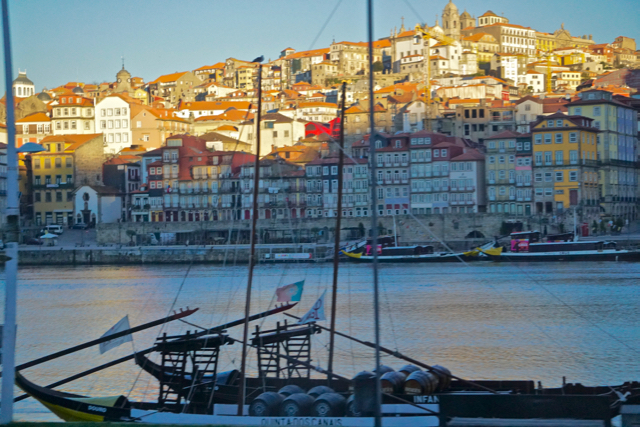
Following two nights and one full day, we were transported by bus from the capital Lisbon to the scenic and historic city of Porto. I learned that Port wine is named for the city of Porto (Vino de Porto), not the country of Portugal. I learned that Port wine is “fortified” with pure alcohol, which halts the fermentation process preserving the wine for easier transport and storage. The alcohol content is 19-20%, stronger than normally fermented wines. There are no “port” grapes. Port wine is produced from a blend of grapes grown in the Douro Valley, fortified and produced according to several centuries of Portuguese tradition. Just as the name Champagne is limited to a certain region of France, the name Port Wine is exclusive reserved to the grapes grown in the Douro Valley and produced in the city of Porto. We were treated to a Port wine tasting today. It is a wonderful cultural tradition.

Porto supposedly has the greatest wine storage of any city in the world.
This trip to Portugal takes place under the auspices of Viking River Cruises. This is Susan’s and my third cruise by this wonderful company. They do a great job, and I recommend them highly for anyone thinking of traveling with them. In a small world coincident, my Indian musician friend Remo Fernandes, whom I first met in 1982 in Bombay, has been a resident of Porto for the last two years. He was able to join us for dinner on the boat last night. I had last seen him several years ago when I visited him at his home in Goa, India.
The history of the city of Porto is perhaps even richer than that of Lisbon. Porto, located where the Douro River flows into the Atlantic Ocean, has a recorded history dating from several centuries before Christ. The region was conquered by the Roman Empire around 200 BC, who used the Douro River as a natural defensive barrier as well as a path for bringing supplies to their soldiers.
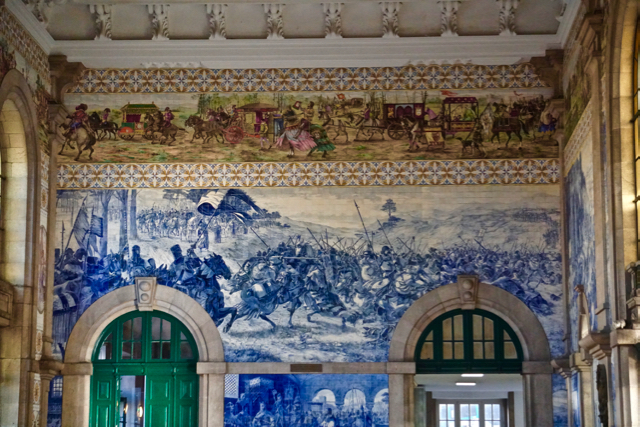
Porto has more impressive statues than any other city I’ve visited besides Paris (which must have more public art than any other city in the world). But Porto, with a metropolitan population of 1.3 million people, is similar to Paris in terms of ornate buildings and statues. Also, Portugal in general, and Porto, in particular, is famous for its decorative tiles. Many buildings are covered in tiles, which serve as insulation and decoration, removing the need to be re-painted periodically like most conventional buildings.
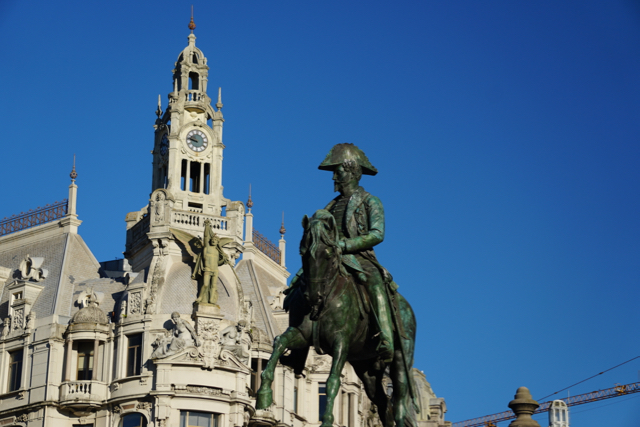
I learned that author J. K. Rowling, author of the Harry Potter novels, lived and worked in Porto for ten years. She took inspiration from several aspects of Porto which were reflected in her writings, including the revolving staircase in a bookstore, the train that departs into a dark tunnel, and the traditional black capes worn by students (which were taken from the dress style of the Catholic priests who taught at the university).
Today, the Viking River boat Hemming departed Porto to sail up the Douro River. We will sail as far as possible by boat and then be transported by bus into Spain for a day. Then we will return to the boat and sail back down the river to Porto. The distances are not too long. It will be a great excuse to drink lots of Port wine. At this time of year, Portugal is the warmest place in Europe. It will be interesting to spend the Christmas holidays on a tour of Portugal and Spain.
Happy holidays and happy travels to all!
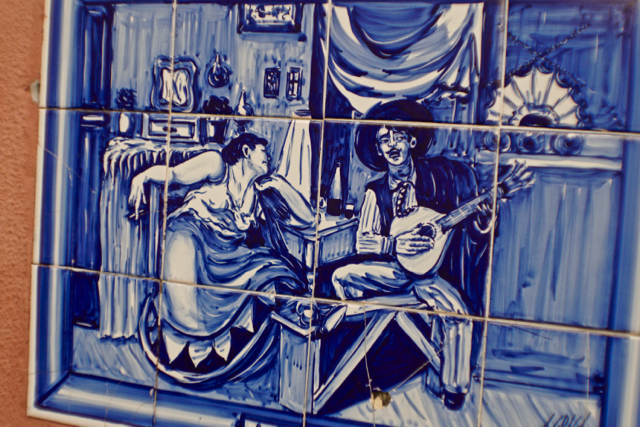


0 Comments on Welcome to Portugal
Join the Conversation